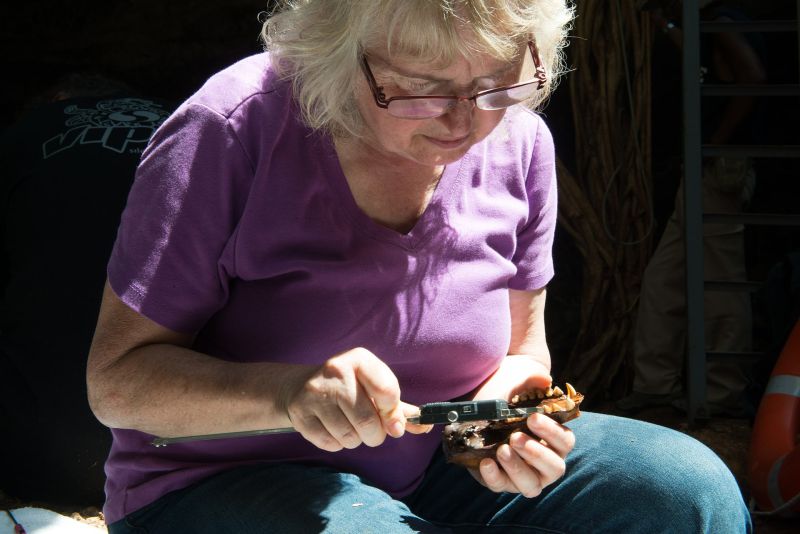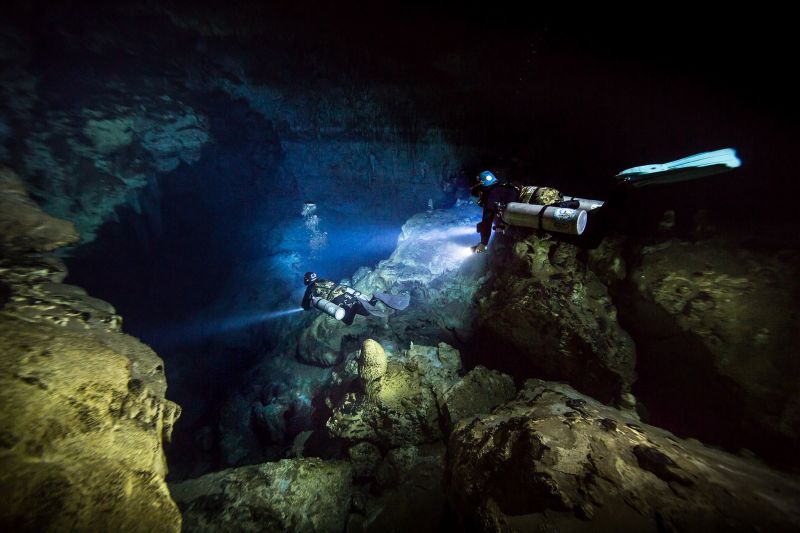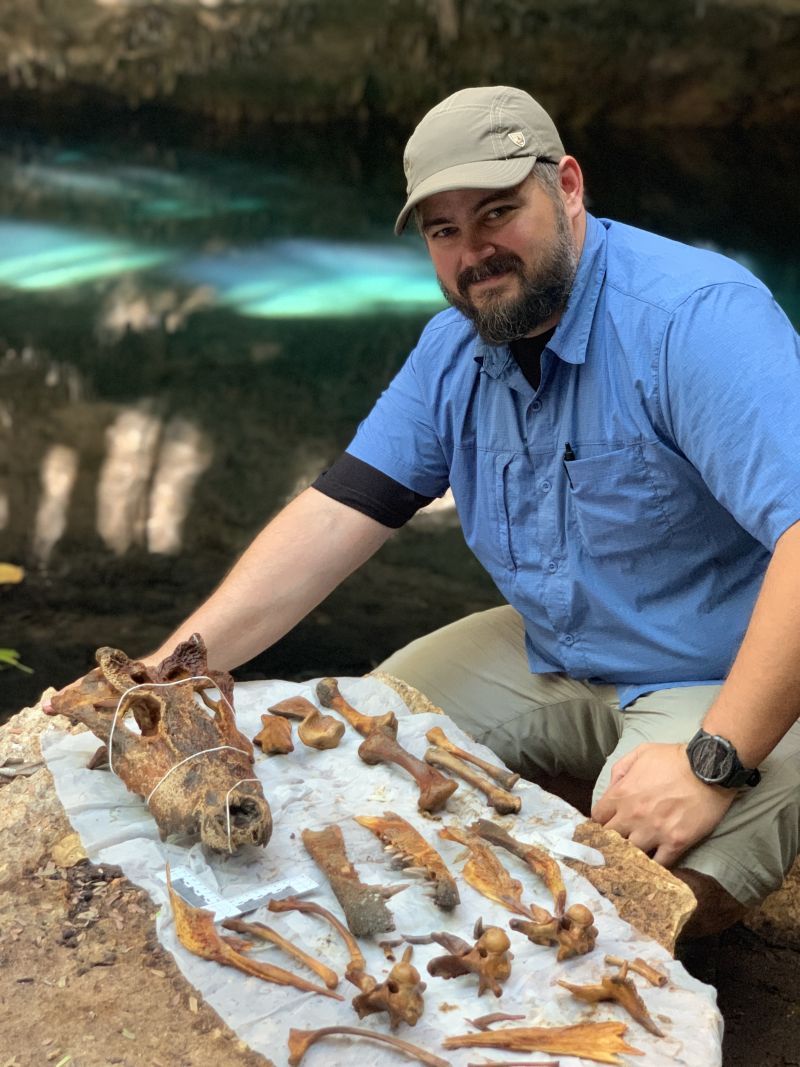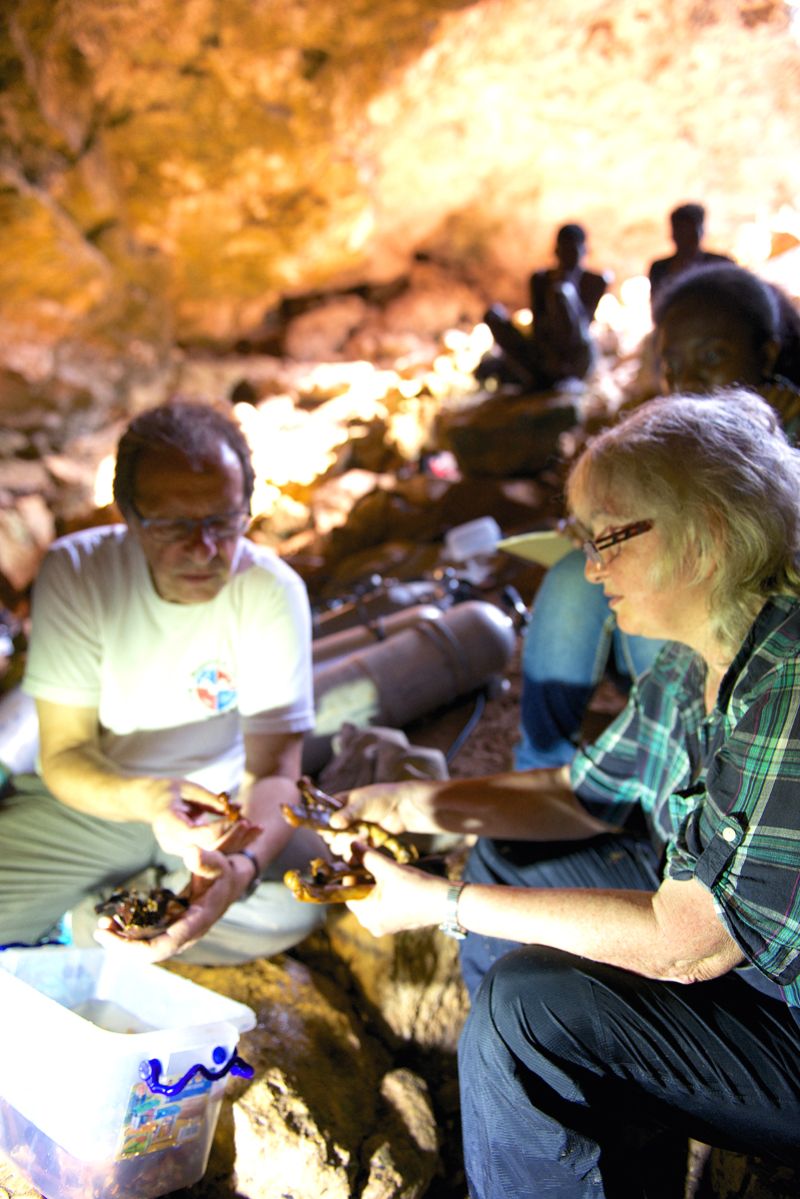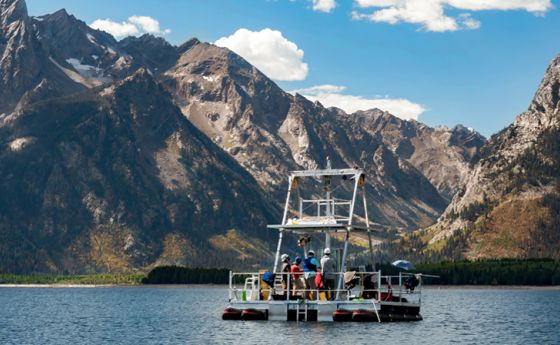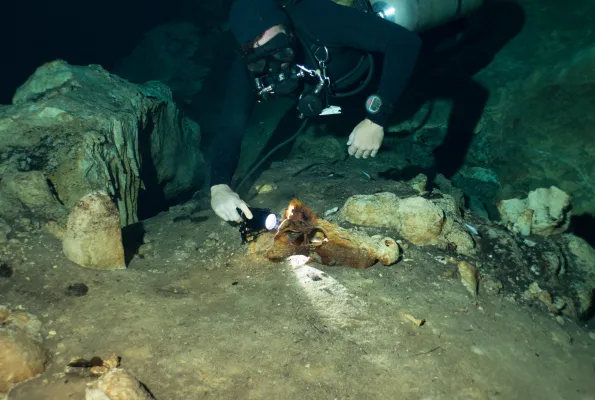
Fossils from flooded caves in Madagascar offer a new perspective on the region’s history
Despite their proximity to the ocean, the flooded caves of Tsimanampetsotse National Park in southwest Madagascar are filled with fresh, clear water. While exploring one of the caves, named Vintany, divers accidentally stumbled upon a treasure trove of fossils. The thousands of year-old fossils, along with stalagmites that formed before the caves had filled with water, preserved detailed chronological records of vegetation and climate change.
The divers understood the scientific importance of what they found, so they reached out to a colleague who in turn contacted researchers with knowledge of Madagascar’s history. I am a biological anthropologist and paleontologist who has spent decades exploring sites throughout the country. The teams that I have worked with have discovered new species and new skeletal elements of previously known species. We have solved mysteries regarding bones that previously had been attributed to the wrong species, and we have explored new ways to infer behavior from bones of extinct species.
After our group of scientists had consulted with the divers, I knew that they had found a unique opportunity. No one had ever studied the fossils from the flooded caves or stalagmites from anywhere in Southern Madagascar. I was eager to see whether these fossils would help explain the timing and factors that led to the extinction of the creatures I study.
But collecting the material presented a daunting challenge. The entrance to Vintany lies at the bottom of a deep sinkhole, and few paleontologists are experts in underwater paleontology.
Mapping the caves and collecting fossils
Supported by the U.S. National Science Foundation, we built a large, multinational, interdisciplinary team of scientists and expert cave divers to map the underwater caverns and retrieve specimens. Dr. Zachary Klukkert, a cave diver and paleontologist with experience recovering fossils from flooded caves, led the underwater excavations and survey team to explore Vintany and collect samples.
Underwater survey and cartography have changed little, technologically, since the early days of the science. Range finders and other electronic tools used to map dry caves don’t work underwater, so the dive team had to use a line and compass to map the complex topography of a space nearly the size of a football field. Another challenge was the loose sediment. While it allowed for quick excavation, it also made preserving the layers needed to help quantify fossil age extremely difficult.
It took the underwater team more than a week to collect the initial survey data to map the site and design a plan for collecting the fossils. Once that process was complete, it took only two hours to collect 500 fossils during a single expedition.
Uncovering the history of Madagascar
After the fossils were above ground and dry, the rest of the team took over, applying our diverse skills to discover what the fossils and organic material could reveal about the factors that led to the disappearance of large animals, or megafauna, that roamed Madagascar thousands of years ago. The team included a biogeochemist, and a small mammal specialist. We also collaborated with paleogeneticists, bioarchaeologists and archaeologists, and with a team of paleoclimatologists, which uses stalagmites from both flooded and dry caves to study climate change.
The caves yielded more than we could have possibly imagined – including a new species of fosa, a native carnivoran related to mongooses but much bigger than their living counterparts. We also found bones of extinct horned crocodiles and hippopotamuses.
The materials helped us identify that a major drought, which lasted around 700 years, had occurred in Southwest Madagascar midway through the first millennium AD. While the drought might have impacted some species, especially water-dependent birds, many species (including some giant lemurs, hippos, and elephant birds) survived well beyond the drought. There was no evidence that the drought had triggered large-animal extinction.
We found that these large species disappeared only after humans had arrived with cattle and other domesticated animals. Though foragers and hunters had occupied the region for an extended period prior to this extinction, they did not have any major negative impacts on the native fauna. It was only when farmers and herders cleared the land for farming and grazing that the native large animal populations suffered.
Supported by grants from NSF, we are continuing our research to better understand the impact this had. Our planet is rapidly losing biodiversity today. Understanding how that biodiversity changed over the past several millennia is of vital importance if we are to preserve the species that remain.
Laurie Godfrey authored this article on behalf of the project’s other principal investigators: Dr. Stephen Burns, Dr. Brooke Crowley and Dr. Kathleen Muldoon, and principal Malagasy collaborator, Lovasoa Ranivoharimanana. Other members of the team included: Dr. George Perry, Dr. Ventura Pérez, and Dr. Kristina Douglass. Along with Klukkert, the dive team included: Phillip Lehman, Ryan Dart, Patrick Widmann, and other divers from Protec Dive Centers in Mexico.

